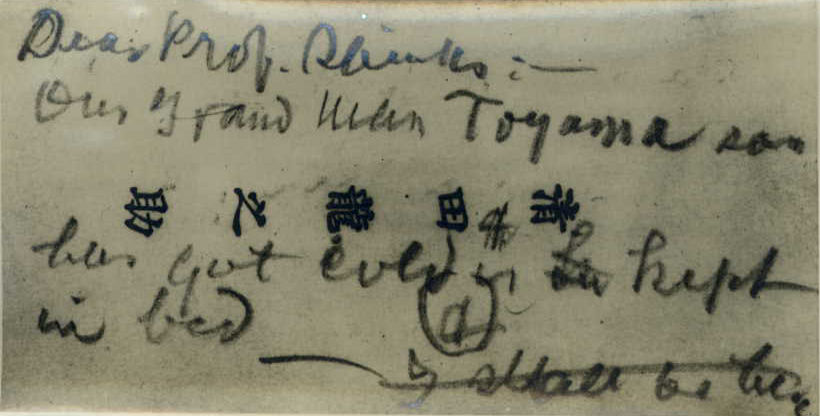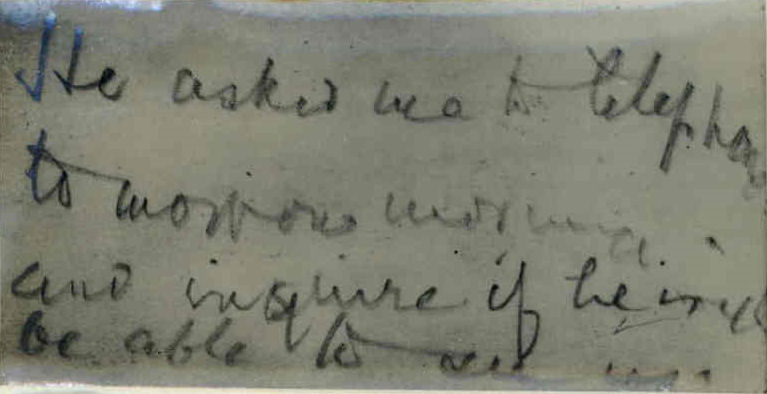JAPANESE MASTER SPY
IN QUEENSLAND
PROFESSOR RYONOSUKE SEITA
![]()
58 year old Professor Ryonosuke Seita (born 3 March 1880) arrived in Sydney, New South Wales on the "Canberra Maru" on 14 March 1938. Almost immediately after his arrival in Sydney he visited the Consul-General in Sydney and reprimanded him for his failure to correctly instruct one, "Doi" (possibly Kenze Doi - clerk at Araki & Co in Brisbane) to keep in touch with Seita. "Doi" was employed by Araki & Co and travelled about Queensland more than was considered necessary by the Security Service.
Seita had received a series of articles from a representative, Kisuki Toyoda, in Sydney of the Domei News Agency (Japanese Press) of Japan. These articles dealt with Australian Defence matters. Mr Masaiti Kurata was the Chief of the Sydney Bureau for the Domei News Agency. Masaiti arrived in Sydney on the "Atuta Maru" on 15 October 1940 and returned to Japan on 9 July 1941.
Australian counter-intelligence agents started to monitor Seita soon after he arrived in Brisbane.
His daughter Sumiko arrived in Brisbane on the "Kamo Maru" on 13 June 1939. Seita became the nominal leader of the Japanese community in Brisbane after his arrival in the country. Seita and his daughter Sumiko lived at "Glostermin" Private Hotel, Hamilton Road, Brisbane.
Seita had previously been a senior diplomat in Germany and spoke fluent German. He was often observed in the company of known Japanese espionage agents. He would become involved in the distribution of pro-Axis propaganda leaflets.
Seita was appointed Professor of Japanese at the University of Queensland in Brisbane in 1938 by agreement between the Queensland and Japanese Governments, and the International Cultural Relations in Tokio (now Tokyo). He was a highly placed and very influential Japanese secret agent. He had been nominated for the position by the Japanese Foreign Office, which was heavily involved in espionage operations.
In a lecture at the Queensland University in November 1938, Seita gave a short resume of his version of Japanese policy regarding China and Japan's growing desire for expansion and power. Throughout his lecture he conveyed the impression that he admired Germany and coupled its name with Japan, as young nations who one day might challenge Britain's supremacy.
Seita occasionally visited the Friendly Society of Japan in Brisbane to give propaganda addresses. He was regarded by the Japanese community as the leading Japanese person in the state.
G. Mor of 24 Market Street, Brisbane, a student of Seita, stated that Seita was pro German. he indicated that Seita had stated "Britain should return all of the German colonies otherwise she deserves what she is getting". He also stated that he intended to retire in Germany. G. Mor prior to a trip to Japan was given a letter of introduction to the Japanese Intelligence Department by Seita, who was seemed disappointed when he discovered that Mr Mor did not utilise the letter during his visit to Japan.
A Japanese company in Sydney paid Seita for his espionage work. Unbelievably he was later appointed as translator in the high security Brisbane Censor's Office from some time in 1940 until the outbreak of war. This gave him access to every Japanese communication in and out of Queensland. Despite please to remove Seita from this role, the bureaucracy would not believe that he could possibly be a Japanese Secret Agent. On 10 January 1941 Officials in Canberra had been warned that Seita was working in the Censorship Staff in Brisbane.
After the Japanese attack on Pearl Harbour on 7 December 1941, Seita was arrested in Brisbane as an alien on 8 December 1941. His identification No. was QT. 16156. Australia security agents searched Seita's house. A visiting card of Mitsuru Toyama was found in his residence. Mitsuru Toyama was the head of the feared Black Dragon Society. The visiting card was found to bear the following message in pencil, in what appeared to have been Seita's handwriting:-
"Dear Prof.Spinks (?),
"Our Grand Man Toyama san has got cold and is kept in bed. He asked me to telephone tomorrow morning and inquire if he will be able to see us."

NAA File:- Seita, Ryonosuke - Queensland
investigation case file - Barcode 335618
The visiting card of Ryonosuke Seita found in his house

NAA File:- Seita, Ryonosuke - Queensland
investigation case file - Barcode 335618
The visiting card of Ryonosuke Seita found in his house
The Deputy Director of Security in Queensland, J.C. McFarlane, wrote in his report on 8 July 1942 to the Director-General of Security in Canberra that "The fact that TOYAMA is referred to as 'our Grand Man' leaves little doubt that the person referred to is MITSURU TOYAMA, the guiding spirit of the Black Dragon Society...... SEITA's acquaintance with TOYAMA points to the possibility of SEITA having been responsible for Japanese espionage in this State, and as a precautionary measure a careful check will be made on all his known associates."

Visiting Card of Mitsuru Toyama.
The above Visiting Card of Mitsuri Toyoma was found amongst the effects of Ryonosuke Seita. The printed name in the centre of the card appears to be Mitsuru Toyama. The writing on the right hand side reads as follows:-
"Introduction to Mr. Ryonosuke Seita."
The writing on the left hand side reads:-
"Mr. Ichizo Suenaga."
The Deputy Director of Security for Queensland drew the conclusion that the card appeared to be a card of introduction from Toyama introducing Seita to Suenaga.
More than a year after Seita's arrest, a Brisbane Security Agency issued a secret report which confirmed that Seita was a Japanese agent. The Japanese Foreign Office later tried to arrange an exchange of Seita for several Australian internees being held in Japan. Australian Intelligence directed that Seita be held in Australia. Unfortunately their request was ignored and Seita was repatriated to Japan in August 1942.
Professor Ryonosuke Seita was initially interned at Gaythorne Internment and POW Camp in Brisbane on 8 December 1941. He was transferred to Hay Internment and POW Camp in NSW arriving on 3 January 1942. He was then relocated to Liverpool Internment and POW Camp on 20 February 1942 and then to Loveday Internment Camp on 28 February 1942. He was moved to Tatura Internment Camp on 11 March 1942. He spent some time in Waranga Hospital from 9-17 May 1942. He was repatriated on 16 August 1942.
NOTE:- For the record other Japanese to arrive on the same ship in Sydney as Professor Ryonosuke Seita on 14 March 1938 were:-
TAKEDA Ichiro
SAITO Nobusuke (He had earlier arrived in Sydney on "Kitano Maru" in Sep 1932 and left per "Brisbane Maru" in Oct 1932)
MATSUO Hisanobu
MIYAKE Saburo (another NAA file shows "MIYAKE Saburo arriving in Sydney on 15 April 1938" - this entry has same day of birth, 9 April, but one year difference in year of birth)
REFERENCES
"Shadows Dancing - Japanese Espionage
against the West 1939 - 1945"
by Tony Matthews
ACKNOWLEDGEMENTS
I'd like to thank Joseph Cronin for his assistance with this web page.
Can anyone help me with more information?
"Australia @ War" WWII Research Products
|
© Peter Dunn 2015 |
Please
e-mail me |
This page first produced 15 April 2002
This page last updated 17 January 2020